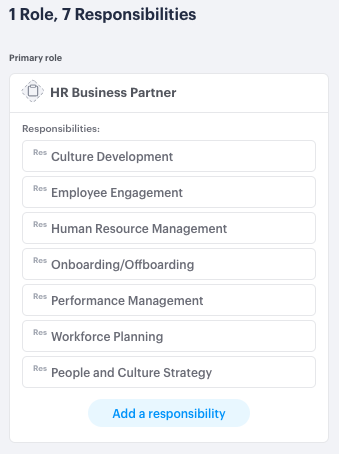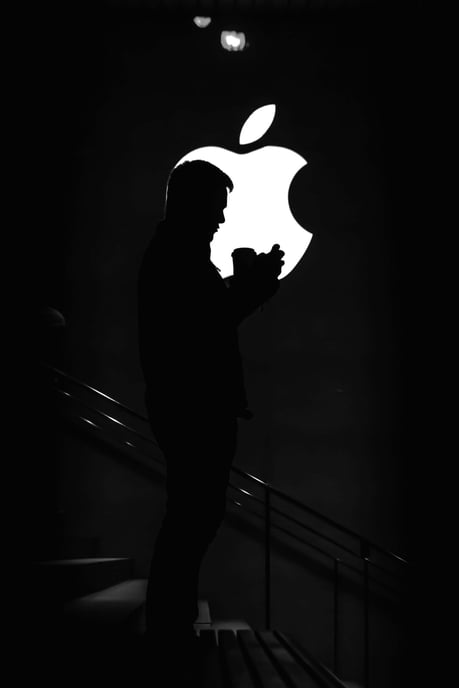Apple has evolved from its beginnings in a garage to a global tech leader through a unique organizational structure.
• The company operates on a functional matrix, centralizing expertise rather than focusing solely on individual products. • Centralization allows for better communication, coordination, and rapid innovation.
• The leadership team, headed by CEO Tim Cook, includes senior executives responsible for various functional areas.
• Apple's Board of Directors is diverse, bringing different expertise to navigate market conditions.
• Key success factors include collaborative decision-making, clearly defined roles, streamlined product development, unity of leadership, and vertical integration.
• Apple's culture emphasizes collaboration, accountability, excellence, and secrecy, enabling innovation and maintaining competitive advantage.
• The company's focus on design aesthetics and user-friendly interfaces has created a loyal customer base and positioned Apple as a premium brand.
Overall, Apple's functional structure has fostered a culture of innovation and excellence, contributing significantly to its remarkable success in the tech industry.
Apple, the iconic brand synonymous with innovation and sleek design, has long been a trailblazer in the tech industry. From its humble beginnings in a garage in Cupertino, California, to its meteoric rise as a global powerhouse, Apple's story is one of relentless ambition, daring vision, and an unwavering commitment to thinking differently.
The brainchild of Steve Jobs, Steve Wozniak, and Ronald Wayne, Apple's journey has been peppered with numerous anecdotes that illustrate its unique approach to business and organizational structure. Take, for instance, the time when a young Steve Jobs convinced a skeptical computer parts supplier to provide Apple with the components needed for their first computers by exuding confidence and sheer determination.
It's moments like these that have come to define Apple's spirit and set the stage for the company's unprecedented success. In this article, we will touch on the intricacies of Apple's organization chart, explore the distinct culture that pervades its ranks, and unearth the factors that have propelled this tech titan to unparalleled heights.
Understanding Apple's Organization Structure
Centralization is at the heart of Apple's unique organizational structure, which is nothing short of surprising when compared to the typical product team structures found in other big tech organizations. Unlike the common, decentralized approach adopted by many large multinational corporations, Apple could be described as having a functional matrix and takes a more centralized, hierarchical, and focused approach. This means the company is organized around areas of expertise, rather than individual products, defying conventional wisdom and charting its own course.
This functional structure enables better communication and coordination, creating a well-integrated team that can effectively tackle challenges and innovate at breakneck speed. It's a testament to Apple's commitment to thinking differently and breaking the mold, which has been a driving force behind its success. The late visionary and ex-CEO, Steve Jobs, was instrumental in crafting this structure, with the aim of fostering rapid innovation on new technology, while maintaining Apple's core values of simplicity, elegance, and user experience.
Here is a brief overview of Apple's organizational chart:
1. Board of Directors: Headed by Chairman Arthur D. Levinson, the Board of Directors oversees Apple's activities, protects shareholder interests, and guides the executive team on major decisions.
2. CEO: Since August 2011, Timothy D. Cook has been Apple's Chief Executive Officer. As CEO, Cook is responsible for the overall management and vision of the company. Cook occupies the only position where the design, engineering, operations, marketing, and retail teams of any of Apple’s main products meet. He is supported by a team of senior vice presidents who are in charge of functions, such as hardware engineering, software engineering, machine learning and AI strategy, retail and people.
3. Senior Leadership Team: The top executives responsible for specific areas report directly to Cook. These areas include design, hardware engineering, software engineering, services, sales & marketing, and more.
4. Departments and Divisions: Beneath the senior leadership team, functional departments and divisions consist of various teams working on specific projects and products.
View Apple's senior leadership team in this interactive org chart. Note, roles and responsibilities in this chart are indicative only (using Functionly's default role templates).
The Apple Board of Directors: A Profile
We can learn a lot from real org charts. The diversity of backgrounds and expertise of Apple's Board of Directors is what makes it stand out. This diversity in perspectives and experience helps guide Apple through challenging market conditions and ensures sustained growth. Some of the notable members of Apple's Board of Directors include:
- Arthur D. Levinson (Chairman): Levinson has a Ph.D. in Biochemistry and has been the Chairman of Apple's board since November 2011. He previously served as CEO of Genentech from 1995 to 2009 and is currently the CEO of Calico, a Google-funded research and development biotechnology company.
- Al Gore (Board Member): Al Gore is the former Vice President of the United States and has been a member of Apple's board since 2003. His expertise in sustainable tech and climate change has influenced Apple's commitment to environmental initiatives.
- Andrea Jung (Board Member): Andrea Jung, a former CEO of Avon, brings experience in marketing, branding, and customer experience to Apple's Board of Directors. In addition to serving as a board member, Jung is also the President and CEO of Grameen America, a nonprofit microfinance organization.
- James A. Bell (Board Member): Bell is a former CFO and Corporate President of The Boeing Company and has been a member of Apple’s board since 2015. He brings expertise in finance, operations, and corporate governance to Apple’s board.
- Monica Lozano (Board Member): Lozano is a former President and CEO of College Futures Foundation and has been a member of Apple’s board since 2020. She has experience in media, education, and philanthropy and serves on the audit committee of Apple’s board.
- Ronald D. Sugar (Board Member): Sugar is a former Chair and CEO of Northrop Grumman Corporation and has been a member of Apple’s board since 2010. He is an expert in engineering, technology, and aerospace and serves as the chair of the audit committee of Apple’s board.
- Susan L. Wagner (Board Member): Wagner is a co-founder and director of BlackRock and has been a member of Apple’s board since 2014. She has extensive knowledge in finance, investment, and global markets and serves as the chair of the nominating committee of Apple’s board.
- Alex Gorsky (Board Member): Gorsky is a former Executive Chair of Johnson & Johnson and has been a member of Apple’s board since 2021. He has leadership experience in health care, consumer products, and medical devices and serves on the compensation committee and the nominating committee of Apple’s board.

Photo: Apple store front by Rayyan Shahid | Pexels
The Secret to Apple's Success: The Unconventional Approach
Apple's functional organization structure may not be typical, but it has undoubtedly proven productive. Here are some of the factors that have contributed to Apple's phenomenal success:
- Collaborative decision-making: Apple encourages collaboration. This enhances communication between departments, encourages idea sharing, and ensures that the company as a whole benefits instead of individual departments.
- Specific roles and responsibilities: Apple's organizational structure clearly defines the responsibilities of each employee. This enables individual employees to contribute their best, and contributes to high-quality products and services.
- Streamlined product development: Apple invests its time and resources in perfecting a limited number of well-designed, high-quality products that maintain strong brand recognition, rather than offering a wider range of products. This focus has been pivotal to its success.
- Unity of leadership: Apple's Executive Team, under the visionary leadership of Steve Jobs and now, Tim Cook, has shown unwavering commitment to a unified vision. This culture has created a team of innovators, creators, and excellence within the company.
- Vertical integration: This allows Apple to control every aspect of its value chain, from hardware to software to services. This gives the company more flexibility, efficiency, and profitability than its rivals.

Image: Functionly includes role templates with detailed responsibilities | Created by author
By organizing around areas of expertise rather than products, Apple has been able to foster innovation and collaboration across its functions. Following a unified vision and a vertical integration strategy, the company has been able to maintain its competitive edge and profitability.
Moreover, Apple's obsession with attention to detail and emphasis on design aesthetics have set it apart from competitors. The company's dedication to creating user-friendly interfaces and seamless experiences have resonated with customers worldwide, creating a loyal fan base that eagerly anticipates every new product launch. Combined with the company's ability to craft compelling narratives around its products, it's enabled Apple to position itself as a premium brand, commanding a loyal following and higher profit margins
Apple’s unconventional approach has proven to be a winning formula for its success - nobody would argue otherwise! This unique blend of factors - collaboration, clearly defined roles, streamlined product development, unity of leadership, vertical integration, design focus, and marketing acumen - has propelled Apple to the forefront of the tech industry, solidifying its position as a global powerhouse and a prime example of organizational ingenuity.
 Photo by Duophenom | Pexels
Photo by Duophenom | Pexels
Apple's Organizational Culture
Apple's organizational structure has been instrumental in shaping its culture. It's culture has been characterized by secrecy, collaboration, accountability, and excellence:
1. Collaboration: Has enabled Apple to leverage the expertise and creativity of its diverse workforce and foster cross-functional innovation
2. Accountability: Ensures that everyone in the organization is committed to delivering results and meeting high standards
3. Excellence: Reflects Apple’s pursuit of perfection and customer satisfaction in everything it does
4. Secrecy and Confidentiality: To maintain a competitive edge in the ever-evolving tech industry, Apple emphasizes guarding its intellectual property. Consequently, secrecy and confidentiality remain integral aspects of Apple's organizational culture.
Embracing Apple's Organizational Structure
Apple has set the bar high with its unconventional organizational structure. Its functional approach to collaboration has fostered a culture of innovation, creativity, and excellence within the company, resulting in remarkable success.
The uniqueness of Apple's functional structure also lies in its ability to mitigate the risk of siloed thinking and promote collaboration across departments. This cross-functional approach fosters a culture where ideas can flow freely, unhindered by the boundaries of product-based teams, and empowers employees to think beyond their immediate responsibilities. As a result, Apple has been able to consistently deliver groundbreaking products and services that captivate consumers and elevate the company's standing in the tech world.
 Photo by Ivan Babydov | Pexels
Photo by Ivan Babydov | Pexels
In essence, Apple's unconventional functional structure has been a crucial element in its continued success and has allowed the company to stand out from the crowd. It's a shining example of how thinking outside the box and challenging industry norms can lead to remarkable achievements and redefine the boundaries of what's possible in the world of technology.
By understanding the inner workings of Apple's organization chart, its culture, and factors that contribute to their success, businesses can learn valuable lessons and achieve similar success.
Use Functionly to visualize and design your organizational structure in minutes—no spreadsheets needed! Transform your team's collaboration and innovation like Apple and take your business to new heights.
---
Header image: Created by author with Generative AI





